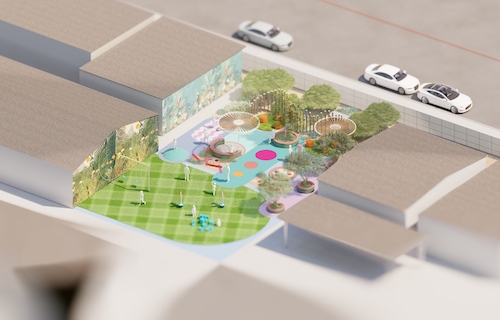Key points:
- Simple design changes can transform student experiences
- 4 ways we designed collaborative learning spaces
- Sensory spaces may help support all students
- For more news on equity and access, visit eSN’s Educational Leadership page
For generations, school facilities have been designed for the average student, leaving neurodiverse individuals to struggle in environments that don’t meet their needs. Recently, however, the growing awareness of neurodiversity has started to shift the school design narrative for students with unique learning styles.
Every student deserves to feel like school is a place designed with them in mind – a space where they belong and can thrive. The sense of belonging is key to promoting success and equity among all students, which has a profound ripple effect on their futures. Using the built environment to promote equity in the classroom starts with understanding each student’s sensory needs and learning styles, whether in the classroom or on the playground.
Indoor design
Many neurodivergent students have sensory needs and sensitivities that can be accommodated through intentional school design choices. Standard school designs that have been around for 40 or more years can leave them feeling stressed and anxious. These feelings can hinder their ability to learn or lead them to act out, damaging their academic performance and overall school experience. However, research and experience have shown that simple school design changes to hallways, shared spaces, and classrooms can transform a student’s time at school.
Incorporating tactile details can help students fill their sensory stimulation needs. Small additions, such as textured walls, allow students to engage with the building itself as they walk from class to class. These tactile additions can calm agitated students, providing them with a healthy outlet for their sensory needs. Placing these textured surfaces on walls or other non-centralized areas empowers students by allowing them to engage with the materials when they need to, which can be especially helpful for overwhelmed students who may already be struggling with sensory overload.
Designing dedicated sensory spaces throughout campus gives both neurodiverse and neurotypical students an area to gather themselves before tackling the next assignment or transitioning to a new class. While changing the lighting and incorporating sensory walls or water features makes these spaces particularly soothing for neurodiverse students, sensory environments are calming for anyone who needs a break from the bustle of school, whether they’re students or even teachers and administrators.
Even the furniture is adapting to each student’s unique learning style. Research consistently shows a link between comfort and productivity, but traditional school desks are hardly a comfortable learning environment. Many students don’t sit at a table to do their schoolwork at home–they’re lounging in bed or on a sofa. Substituting some traditional furniture for standing desks or bean bags allows students who focus better while moving, standing or slouching to thrive in a comfortable learning environment tailored to their needs.
Outdoor design
Crafting outdoor spaces that ensure every student has access to nature is essential to providing an equitable education. Time spent outside is grounding and stabilizing for students, so crafting spaces that are accessible to all is integral to the holistic development of each student.
Playgrounds offer an abundance of opportunities to creatively design for all students. Incorporating elements such as a musical environment, edible gardens, or sensory paths encourages children with autism or other neurodiversity to engage with the space. Establishing inclusive school environments hinges on providing play areas where neurodiverse students can feel understood and enjoy themselves. The positive impact extends beyond neurodiverse individuals, benefiting every student who engages with these spaces.
A variety of outdoor environments allows all students to learn and grow through exposure to nature, which promotes their physical and mental well-being. Without thoughtfully designed outdoor spaces to accommodate all learning styles, neurodiverse students may feel unable to enjoy their time outside, whether that be because they can’t physically access different play spaces or because those spaces don’t meet their needs. Designing spaces with every child in mind allows all students to benefit from the many advantages of time outdoors, which then translates to better focus and behavior inside the classroom.
No child should ever be left out, especially at school. These research-backed designs can equip every student for success by helping them feel seen, included and understood. However, the advantages of these changes go beyond just neurodiverse students. By incorporating inclusion into the physical structure of the school and exemplifying it in classroom furniture, schools can educate neurotypical students about diversity through tangible examples and practical applications. Today, schools have a powerful opportunity to model and shape their classroom toward a more equitable future.
- 4 ways to encourage play in education - April 25, 2024
- CoSN IT Leader Spotlight: Lisa Higgins - April 25, 2024
- It’s time to pay student teachers - April 25, 2024

